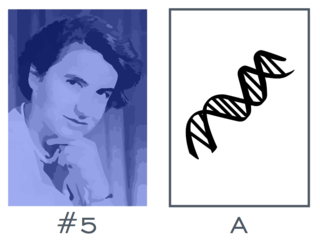Rosalind Franklin

The history of how the structure of DNA was worked out is one of the great science stories, filled with rivalry, conflict and strong personalities.
Within that story, Rosalind Franklin provided the key experimental data underlying the discovery.
Her work to measure how electrons scatter from crystals of DNA produced one of the iconic images in biophysics – Photograph 51 which to a trained eye shows the helical structure and by careful analysis can reveal its dimensions. Using this information James Watson and Francis Crick were able to create a model of DNA, and together with Rosalind’s supervisor Maurice Wilkins went on to win the Nobel Prize in Physiology or Medicine in 1962, four years after Rosalind’s untimely death.
Want to learn more?
Studying how light interacts with materials is a core part of your physics degree at Heriot-Watt.
You can study how the role of physics in living systems as part of the B21MT2 Biophysics module.
Additionally, during your research project and summer internships it is possible to undertake research into areas of biophysics such as how living cells change their physical properties, how cells can interact and communicate with each other, and develop new techniques to look at life in more detail.
Find out more about biophysics research in the Institute of Biological Chemistry, Biophysics and Bioengineering at Heriot-Watt.